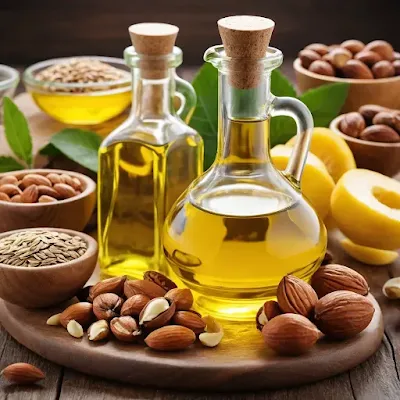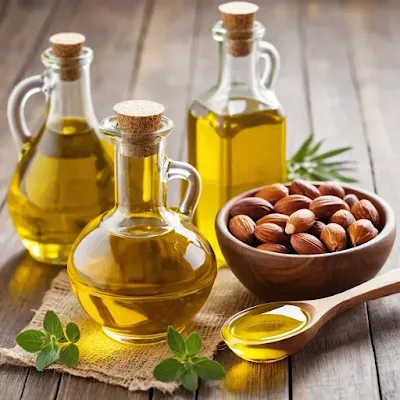Understanding Cooking Oil: A Complete Guide
ingredient
Cooking oil is an essential ingredient found in almost every kitchen around the world. From frying to sautéing, it serves as the base for countless dishes. However, with so many varieties of cooking oils available today, it can be confusing to choose the best option. This guide will help you understand different types of cooking oils, their benefits, and how to use them effectively.
Cooking oil is a plant, animal, or synthetic fat used in cooking, frying, and baking. Most cooking oils come from seeds, nuts, or fruits. Oils provide the necessary fats that enhance flavors and help in the cooking process. They also act as a carrier for fat-soluble vitamins like A, D, E, and K.
## 2. Types of Cooking Oil
Cooking oils come in a variety of types, each with distinct properties and health benefits. Let’s take a look at some of the most commonly used types:
### a) Olive Oil
Olive oil is a favorite among chefs and health enthusiasts due to its rich flavor and numerous health benefits. It comes in various forms like extra virgin, virgin, and refined, with extra virgin olive oil being the least processed and most nutritious. It’s best for dressings and low-heat cooking because of its low smoke point.
### b) Sunflower Oil
Sunflower oil is light and neutral in flavor, making it versatile for a variety of dishes. It’s ideal for frying and deep-frying because of its high smoke point. Sunflower oil is rich in vitamin E, which has antioxidant properties.
### c) Canola Oil
Canola oil is a commonly used oil that comes from the seeds of the canola plant. It has a light flavor, making it perfect for frying, sautéing, and baking. Canola oil is known for its low levels of saturated fats and contains omega-3 fatty acids.
### d) Coconut Oil
Coconut oil has become popular in recent years for its health benefits and unique flavor. It is solid at room temperature and can be used for baking, frying, and sautéing. It contains medium-chain triglycerides (MCTs) which are believed to have various health benefits, including promoting weight loss and heart health.
### e) Avocado Oil
Avocado oil is extracted from the flesh of avocados. It has a high smoke point and can be used for a variety of cooking methods, including frying, roasting, and grilling. Avocado oil is rich in healthy monounsaturated fats and vitamin E.
## 3. Factors to Consider When Choosing Cooking Oil
When choosing a cooking oil, it’s essential to consider factors like health benefits, cooking method, and smoke point.
### a) Smoke Point
The smoke point of an oil is the temperature at which it starts to break down and produce smoke. Once oil reaches its smoke point, it can release harmful compounds and lose its nutritional value. For high-heat cooking, oils with a high smoke point, such as sunflower or canola oil, are ideal.
### b) Flavor
The flavor of the cooking oil can also impact the taste of your dish. Oils like olive oil and coconut oil have distinct flavors that can complement certain dishes, while neutral oils like canola or sunflower are more versatile and won’t alter the flavor of your food.
### c) Health Benefits
Different oils have varying health benefits based on their fat composition. Oils rich in monounsaturated and polyunsaturated fats, like olive and avocado oil, are generally considered healthier. Avoid oils high in saturated fats and trans fats as they may contribute to heart disease.
## 4. How to Use Cooking Oil for Different Cooking Methods
### a) Frying
When frying foods, it's essential to use an oil with a high smoke point to avoid burning. Oils like sunflower, canola, and vegetable oils are commonly used for frying because they can withstand high temperatures.
### b) Baking
For baking, the choice of oil can significantly impact the texture and flavor of the final product. Neutral-flavored oils like canola or vegetable oil are typically used in baked goods, as they do not interfere with other flavors.
### c) Salad Dressings
For salad dressings and dips, oils like extra virgin olive oil or avocado oil are ideal as they add a rich, flavorful touch to your salads. These oils are often used cold to maintain their nutritional value.
### d) Sautéing and Stir-Frying
For sautéing and stir-frying, a medium-heat cooking method, oils like olive oil, coconut oil, or sesame oil are suitable. They provide great flavor without the risk of reaching their smoke point.
## 5. Health Benefits of Cooking Oils
### a) Heart Health
Many cooking oils contain fats that can be beneficial for heart health. Olive oil, in particular, is known for reducing inflammation and lowering the risk of heart disease due to its high content of monounsaturated fats.
### b) Weight Management
Some oils, like coconut oil, contain medium-chain triglycerides (MCTs) which can aid in weight loss by increasing metabolism and reducing appetite.
### c) Rich in Nutrients
Certain cooking oils, like sunflower oil, are rich in vitamin E, an essential nutrient that acts as an antioxidant and supports immune function.
## 6. Tips for Storing Cooking Oil
Proper storage is crucial to extend the shelf life of cooking oil and maintain its quality. Here are some tips:
- **Keep it Cool**: Store cooking oils in a cool, dark place away from heat and light. Exposure to light and heat can cause oils to spoil quickly.
- **Tightly Sealed**: Ensure the bottle is tightly sealed after use to prevent oxidation, which can cause the oil to go rancid.
- **Use Fresh**: Always check the expiration date and use cooking oils within their shelf life to maintain their quality and flavor.
## 7. Common Mistakes When Using Cooking Oil
### a) Reusing Oil Too Many Times
Reusing cooking oil multiple times can cause it to break down and release harmful compounds. It’s best to avoid reusing oil, especially for deep frying, to maintain the quality of your food and avoid potential health risks.
### b) Cooking at the Wrong Temperature
Cooking with oil at the wrong temperature can affect both the flavor and health benefits of the food. Always use the correct type of oil for your cooking method to avoid overheating.
### c) Using Too Much Oil
Using too much cooking oil can add unnecessary calories to your dish. It’s essential to use just enough oil for cooking and avoid excessive amounts to keep your meals healthy.
## 8. Conclusion
Cooking oil is an indispensable part of our culinary world, adding flavor, moisture, and nutrients to our meals. With numerous options available, choosing the right oil can make a significant difference in your cooking and overall health. By understanding the types of oils, their smoke points, and the best cooking methods, you can make more informed choices for your kitchen and health. Remember to store oils properly and use them in moderation to get the best out of their flavors and health benefits.
Whether you prefer the rich flavor of olive oil, the versatility of sunflower oil, or the unique properties of coconut oil, each type brings something different to the table. Choose the oil that best suits your needs and enjoy the delightful flavors it adds to your dishes.
---
This article is structured to be comprehensive yet accessible, utilizing the keyword "cooking oil" effectively in a low-competition context.





No comments:
Post a Comment